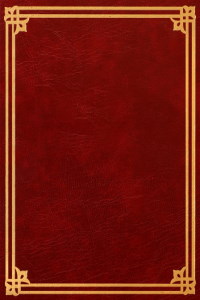Церковная старина в современной России - [196]
Chapters 7, 8, 9 and 10 describe most typical situations in the area of culture monuments transfer to the religious organizations and their protection. I have chosen the main problem regions such as Novgorod, Kostroma, Ryazan, Jaroslavl, Rostov, Solovki, Valaam, Astrahan, Moscow and Saint-Petersburg. The most dramatic episodes and conflicts around the Vladimir icon (1993–1999) and Trinity icon (2008–2009) in Tretijakov gallery, Toropec icon in Russian Museum (2009), Trinity-Sergius monastery of the Moscow region (1992–2001), Ipatius monastery in Kostroma (1993–2005), Assumption church in Kadashi in Moscow (2004), Yaroslavl’s temples (2005), the Ryazan Kremlin (2004–2005) are described in detail. Problems occur in New Jerusalem monastery (Moscow region), Trinity cathedral and Miroza monastery in Pskov, Epiphany monastery (Kostroma), Aleksander-Svirsky and Tihvin monastery (Leningrad region) and in others places. Even the cases of physical abuse of experts working there made by monks are observed (Zeleneckij monastery, Leningrad region, 2004). One of the most scandalous cases is the demolition of several monuments of wooden architecture by local archbishopric including «house of Peredolskij» (XIX century) and dangerous and illegal situation at St. Sophia cathedral in Novgorod.
Activity of hierarchy aimed at property return increases when any anniversaries approach and when it is very probable to receive substantial state financing (1000 anniversary of Yaroslavl, celebrating of 400 anniversary of the dynasty of the Romanovs in Kostroma). The situation is characterized sometimes by «postponed conflict» when unresolved problems fade into the background and threaten to turn back as serious shocks. All these processes take place against the background of the weakness of the civil society. The professional associations set up especially for protection of monuments and sites are very unstable, an example — Novgorod society of the amateurs of Antiquity (since 1999). The All-Russia society for monuments protection (since 1965) has turned into conformist establishment. The Orthodox intellectuals commonly depend on the hierarchy position. The most consecutive fighters for protection of cultural heritages are the political organizations as they consider this action as a part of their political activity in general. A very good example is the position of regional branches of parties «Yabloko» and Union of Right Forces in the conflict around Ipatius monastery in Kostroma (2004–2005).
At the same time I revealed a number of positive tendencies. They concern those establishments of culture where the management takes up the initiative in relations with the religious organizations. In this case the church life is harmoniously enters museum activity. I can mention the Tretiakov State Gallery (Moscow), the museum of the Moscow Kremlin, Pavlovsk memorial museum-estate (Leningrad region), memorial museum-estate of Kizhi (Karelia). Here it is necessary to note the existence of an insignificant layer of the intelligent orthodox clergy who are capable of responsible behavior towards cultural heritage. Unfortunately, the sanction of conflicts depends on the personal relations and not on the social legal mechanisms.
Chapter 11 is devoted to religious aspects of the problem. The chapter characterizes today's theological thought in Moscow patriarchy, analyses social concept of Russian Orthodox church-2000 and estimates the theological innovations in the field of icon painting and church art. The reasons of such theological mutation are connected to the process of acculturation. Special attention is paid to the process of myth-making in modern Church mentality, to the occurrence pseudo-relics (Alexander Svirsky, etc.) and pseudo-miracles (Holy Fire of Great Saturday in Jerusalem, etc.). These phenomena play a great role in the transformation and re-interpretation of cultural heritage. The idea of contradiction between traditional Christian values and modern fundamentalism values is emphasized. The basic conclusion is as follows today the religious organizations fail to maintain efficiently transferred culture monuments, despite previous historical tradition.
Present research allows us to reveal the specificity of the modern Orthodox Church fundamentalism in Russia. According to the conclusions of Chicago Fundamentalism Projects (1995) this phenomenon consists of the aspiration to overcome the secularization by means of totalitarian system construction using modern social and technical progress. This movement usually opposes the society, state and hierarchy. But in Russia fundamentalism is headed by the hierarchy, supported by political elite and is in tune with the mentality of significant part of society. The use of cultural heritage plays the predominating role in Russian Orthodox Church fundamentalism, and its characteristic mark is the rejection of pluralism in the field of interpretation of historical tradition.
The conclusion sums up the research and forms the possible recommendations directed on the formation of civil stability and creation of effective system of protection of monuments and sites. In conditions of inevitable globalization, the cultural heritage of each nation will get special value as main marker, capable to reveal the unique spirit of a nation. The international system of monitoring of monuments and sites transferred to the religious organizations, could become positive factor of preservation of cultural heritage in Russia. This question should enter into sphere of the attention of UNESCO, ICOMOS, PACE and «International Religious Freedom Report» of State Department of the USA: the religious-motivated violence exist side by side with the religious-motivated transformation of cultural heritage and restriction of free access to monuments and sites, that menaces the religious freedom and human rights.

В книге рассказывается история главного героя, который сталкивается с различными проблемами и препятствиями на протяжении всего своего путешествия. По пути он встречает множество второстепенных персонажей, которые играют важные роли в истории. Благодаря опыту главного героя книга исследует такие темы, как любовь, потеря, надежда и стойкость. По мере того, как главный герой преодолевает свои трудности, он усваивает ценные уроки жизни и растет как личность.

В книге рассказывается история главного героя, который сталкивается с различными проблемами и препятствиями на протяжении всего своего путешествия. По пути он встречает множество второстепенных персонажей, которые играют важные роли в истории. Благодаря опыту главного героя книга исследует такие темы, как любовь, потеря, надежда и стойкость. По мере того, как главный герой преодолевает свои трудности, он усваивает ценные уроки жизни и растет как личность.

В книге рассказывается история главного героя, который сталкивается с различными проблемами и препятствиями на протяжении всего своего путешествия. По пути он встречает множество второстепенных персонажей, которые играют важные роли в истории. Благодаря опыту главного героя книга исследует такие темы, как любовь, потеря, надежда и стойкость. По мере того, как главный герой преодолевает свои трудности, он усваивает ценные уроки жизни и растет как личность.

В книге рассказывается история главного героя, который сталкивается с различными проблемами и препятствиями на протяжении всего своего путешествия. По пути он встречает множество второстепенных персонажей, которые играют важные роли в истории. Благодаря опыту главного героя книга исследует такие темы, как любовь, потеря, надежда и стойкость. По мере того, как главный герой преодолевает свои трудности, он усваивает ценные уроки жизни и растет как личность.

В книге рассказывается история главного героя, который сталкивается с различными проблемами и препятствиями на протяжении всего своего путешествия. По пути он встречает множество второстепенных персонажей, которые играют важные роли в истории. Благодаря опыту главного героя книга исследует такие темы, как любовь, потеря, надежда и стойкость. По мере того, как главный герой преодолевает свои трудности, он усваивает ценные уроки жизни и растет как личность.

В книге рассказывается история главного героя, который сталкивается с различными проблемами и препятствиями на протяжении всего своего путешествия. По пути он встречает множество второстепенных персонажей, которые играют важные роли в истории. Благодаря опыту главного героя книга исследует такие темы, как любовь, потеря, надежда и стойкость. По мере того, как главный герой преодолевает свои трудности, он усваивает ценные уроки жизни и растет как личность.

В книге рассказывается история главного героя, который сталкивается с различными проблемами и препятствиями на протяжении всего своего путешествия. По пути он встречает множество второстепенных персонажей, которые играют важные роли в истории. Благодаря опыту главного героя книга исследует такие темы, как любовь, потеря, надежда и стойкость. По мере того, как главный герой преодолевает свои трудности, он усваивает ценные уроки жизни и растет как личность.